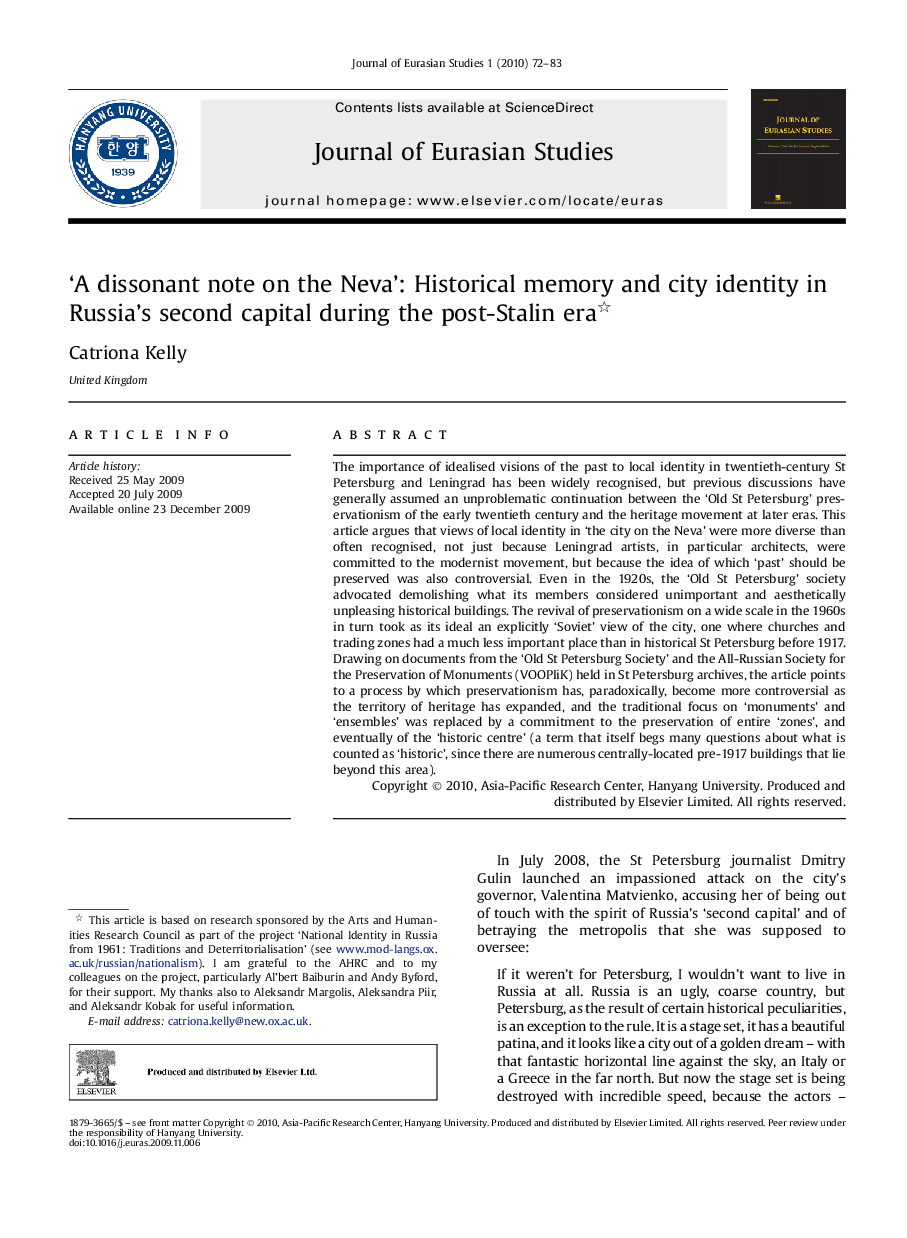| Article ID | Journal | Published Year | Pages | File Type |
|---|---|---|---|---|
| 1127340 | Journal of Eurasian Studies | 2010 | 12 Pages |
The importance of idealised visions of the past to local identity in twentieth-century St Petersburg and Leningrad has been widely recognised, but previous discussions have generally assumed an unproblematic continuation between the ‘Old St Petersburg’ preservationism of the early twentieth century and the heritage movement at later eras. This article argues that views of local identity in ‘the city on the Neva’ were more diverse than often recognised, not just because Leningrad artists, in particular architects, were committed to the modernist movement, but because the idea of which ‘past’ should be preserved was also controversial. Even in the 1920s, the ‘Old St Petersburg’ society advocated demolishing what its members considered unimportant and aesthetically unpleasing historical buildings. The revival of preservationism on a wide scale in the 1960s in turn took as its ideal an explicitly ‘Soviet’ view of the city, one where churches and trading zones had a much less important place than in historical St Petersburg before 1917. Drawing on documents from the ‘Old St Petersburg Society’ and the All-Russian Society for the Preservation of Monuments (VOOPIiK) held in St Petersburg archives, the article points to a process by which preservationism has, paradoxically, become more controversial as the territory of heritage has expanded, and the traditional focus on ‘monuments’ and ‘ensembles’ was replaced by a commitment to the preservation of entire ‘zones’, and eventually of the ‘historic centre’ (a term that itself begs many questions about what is counted as ‘historic’, since there are numerous centrally-located pre-1917 buildings that lie beyond this area).
